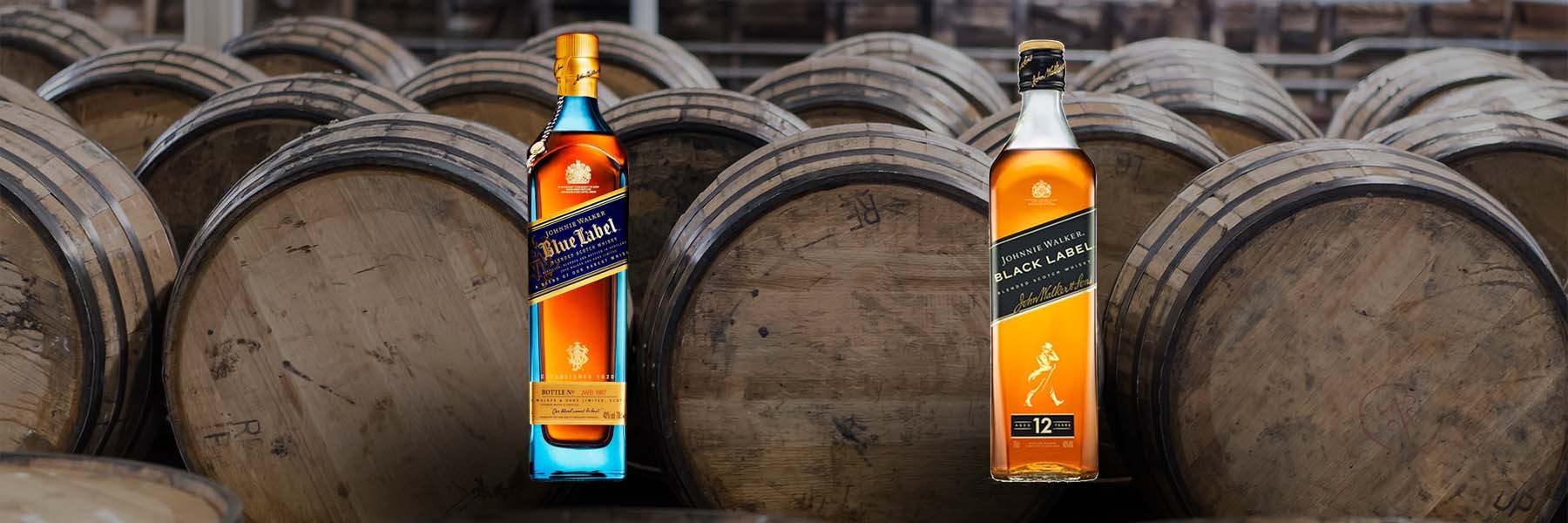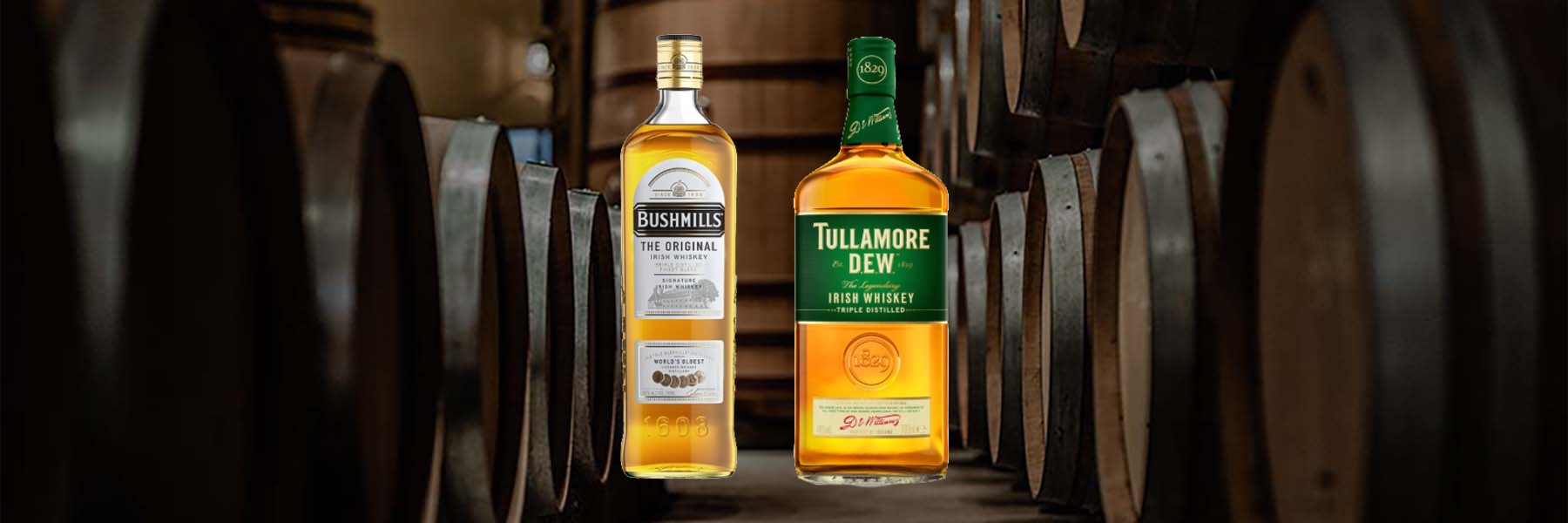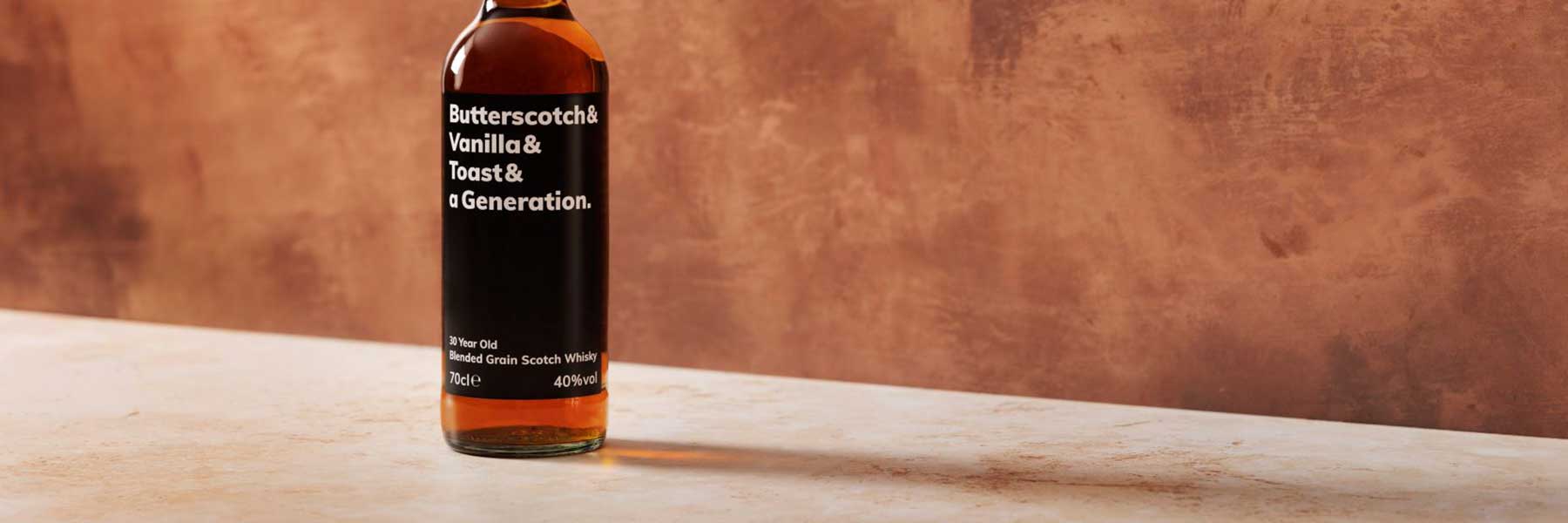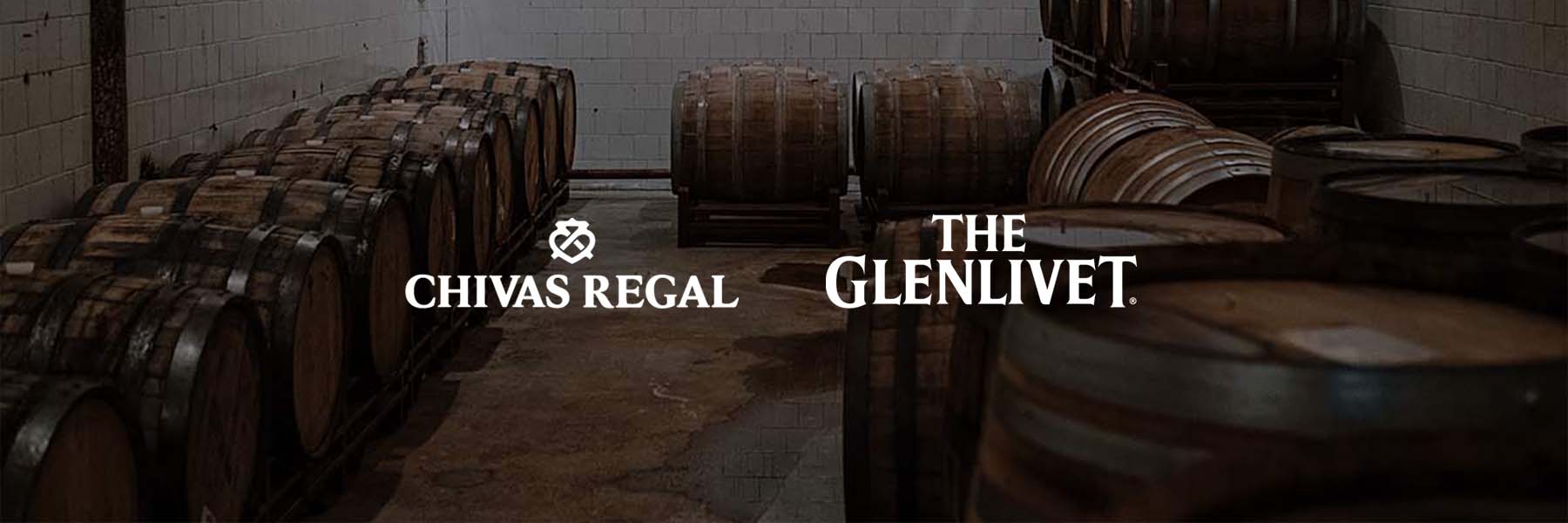Glenfiddich 12 vs 14 | which one is right for you?
The Glenfiddich 12 vs 14 battle. Both whiskies have never failed to impress, it’s clear to see the reason why.
I’ve had the delightful opportunity to experience these extraordinary single-malt whiskies. The meetings with the Glenfiddich 12 and Glenfiddich 14 remain vivid in my mind.
Both originate from the same distillery. That much is no surprise. Yet, these two variations epitomise the captivating subtleties that the process of maturation and choice of barrels can bring to a whisky. Each one manifests its individual interpretation of the signature Speyside style.
Originating from the renowned Glenfiddich distillery in Scotland’s Speyside region, these whiskies do not possess a peat character. They favor the more saccharine, fruity profile common in Speyside offerings, rather than the peaty Scotch whisky’s typical smoky, earthy nuances.
Glenfiddich 12 made me speechless. It possesses a gentle, easy-going character—providing a friendly and pleasurable tasting voyage. It’s the kind of drink I could casually relish on a laid-back evening, cherishing its straightforward, no-frills essence.
Conversely, my experience with Glenfiddich 14 was an intriguing exploration. The use of fresh American oak barrels contributed significantly to the whisky’s intricate, bourbon-like profile. Its prolonged, warm aftertaste made me say “Goodness, gracious!”.
But, hold your horses. The chance to make a review about them doesn’t come around often. It’s rare to see two classics of the Glenfiddich in comparison—bit by bit in detail.
That’s why let’s carefully explore each of these whiskies and stack them against each other side by side. Only by then, you’ll get to see which you’d go for.
Glenfiddich 12 vs. Glenfiddich 14: Quick Look Comparison

| Nose | Fresh, Fruity, Oak |
| Palate | Pear, Apple, Spice |
| Mouthfeel | Smooth, Light |
| Finish | Fruity, Oaky |
| Age | 12 years |
| Cask/Barrels | American & European Oak |
| Strength | 40% ABV |

| Nose | Fruity, Vanilla, Oak |
| Palate | Apple, Toffee, Spice |
| Mouthfeel | Rich, Creamy |
| Finish | Long, Warm |
| Age | 14 years |
| Cask/Barrels | New American Oak |
| Strength | 43% ABV |
Glenfiddich 14
Glenfiddich 12 vs 14: Glenfiddich 12 Review
The Glenfiddich 12-Year-Old is a classic for a reason.
It’s a known favorite amongst newcomers and tenures—boasting quality and approachability that exemplify the Speyside style.
First sip and the Glenfiddich 12 greets you with an inviting nose. It’s marked by its unique crispness and distinct fruity note. Dig deeper and you’ll find a delightful combination of pear and a subtle undertone of ripe apple, all subtly veiled with a trace of oak. The malty foundation enriches the aromatic structure, paving the way for the flavors that follow.
As it touches your tongue, the whisky awakens a graceful straightforwardness that communicates so much with so little. The tasting notes mirror the first scents you discovered: zesty pear and rejuvenating apple take center stage, succeeded by a soft sprinkling of spices and a dash of vanilla sweetness, most likely a gift from the American oak barrels involved in the whisky’s aging process.
One of the irresistible charms of Glenfiddich 12 lies in its accessibility. Remarkably easy-going and light in your mouth, it brings warmth from the alcohol that’s more of a cozy blanket than a raging fire. Coupled with a harmonious fruity melody, it stands as the ideal pick for someone who has had the Glenmorangie 10 and is looking for something similar.
While the Glenfiddich 12 doesn’t boast an extended finish, it offers a delightful endnote that enhances the overall balance of the whisky. The fruity lushness smoothly morphs into a lasting oaky aftertaste—a subtle nod to the whisky’s oak-barrel aging period.
As for the aesthetics, Glenfiddich 12 sports the distillery’s iconic triangle-shaped bottle, a design that has become a signature of the brand. When coupled with the whisky’s vibrant golden hue, it creates an irresistible sight, whether it’s gracing a liquor store shelf or perched on your home bar.
It goes without saying that this Scottish single-malt comes in close proximity to the Macallan 12 Sherry Oak—a fellow Speyside neighbor of the same age. With a delightful oaky finish, this makes it a compelling alternative to the Glenfiddich 12.
But for £37.90/$47.0, you’d rather have this any time of the day. Economically, this makes it an excellent entry-level choice for people trying to explore single-malts. It’s certainly not an overpriced offering with mediocre quality—rather, it brings value for its cost.
But no matter the occasion, the Glenfiddich 12 deserves a prime spot in your whisky cabinet. Don’t you think it’s worth the price tag?
Glenfiddich 12 vs 14: Glenfiddich 14 Review
The Glenfiddich 14-Year-Old is a distinguished expression from the Glenfiddich distillery. It shows an artful balance between traditional Scottish whisky-making techniques and the deep-rooted influence of American bourbon.
The older sibling of the two Glenfiddich classics says hello to your senses when you take a sniff. Momentarily after, you’ll be greeted with a vibrant blend of apple and citrus, a characteristic nod to its Speyside origin.
Underneath this primary layer, you’ll uncover notes of vanilla and caramel, wrapped in a subtle hint of toasted oak, drawn undoubtedly from its final maturation stage in new American oak barrels.
Take the first sip and you’ll find the complexity of the Glenfiddich 14. The whisky is rich with an array of flavors: vanilla and toffee dominate, balanced perfectly with a burst of fresh apple, a touch of citrus, and a sprinkle of baking spices. There’s a certain depth and richness to the flavor profile that is noticeably more developed than its younger sibling, the Glenfiddich 12.
The texture of the Glenfiddich 14 is another standout aspect. It feels velvety smooth on the palate, offering a delightful creaminess that carries these robust flavours elegantly—much like the Glenlivet 15. The sweetness and spice are well-managed—resulting in a satisfyingly harmonious taste that keeps you reaching for more.
Now, don’t get me started with the finish. It is long, warm, and engaging, offering a lingering taste that balances the sweetness of vanilla and caramel with a pleasant, oaky dryness. With that said, I kind of reminded myself of the aftertaste from the Aberfeldy 12. You can feel free to dive right in and take it straight, or maybe you’re the type who likes to add a dash of water.
Moreover, the Glenfiddich 14 continues the tradition of its triangular bottle shape, iconic to the Glenfiddich brand. The whisky itself presents a rich, golden hue, hinting at the depth of character it possesses.
Sitting at 43% ABV, Glenfiddich 14 strikes a harmonious chord between being approachable and spirited. If your palate leans towards more robust whiskies, you’ll find this one to be a refreshing detour that doesn’t skimp on complexity. And for those just dipping their toes into the world of single malt Scotch, it’s an excellent launchpad.
If you’ve seen the actual price, $76/£68 should already be a deal breaker with this 14-year-old.
Glenfiddich 12 vs 14: The Comparison
Even from the same distillery, it’s no doubt that they have differences.
When testing whiskies, one of the initial experiences you will have is the aroma, which sets the stage for the subsequent tasting. And we’re about to get there soon enough.
In comparing the Glenfiddich 12 and the Glenfiddich 14, it is interesting to note how their respective aging processes shape each aspect of each whisky.
Let’s take a closer look at their respective profiles.
Nose comparison
With the Glenfiddich 12, you’re greeted by a beautifully fresh and fruity bouquet. The dominant note is that of orchard fruits, particularly ripe pear, which is complemented by subtle undertones of green apple.
This initial sweetness is underpinned by a hint of oakiness, a testament to its maturation in American and European oak sherry casks. There’s also a faint maltiness that lingers in the background, serving as a gentle reminder of the whisky’s grain-based origin.
On the other hand, the Glenfiddich 14 reveals a more complex aromatic landscape, influenced by its additional maturation in new American oak barrels. The nose is still distinctly fruity but with a noticeable shift towards bright apple and tangy citrus. Intertwined with this fruity layer is a delightful mix of vanilla and caramel, no doubt drawn from the American oak.
A whiff of toasted oak provides a satisfying depth, resulting in a sensory invitation that is both familiar and distinct when compared to the Glenfiddich 12.
Flavour Comparison
Of course, the next stage is the actual tasting, where the unique characteristics of both Glenfiddich siblings truly shine.
Upon tasting, the Glenfiddich 12 presents an elegant simplicity. The flavours align beautifully with the nose – ripe pear and green apple dominate, with a subtle layer of spice and a hint of vanilla sweetness. It’s a smooth and light whisky, easy on the palate, and well-suited for those seeking an approachable single malt Scotch.
On the other hand, the Glenfiddich 14 offers a more robust and nuanced flavour journey. The main tasting notes of vanilla, toffee, fresh apple, and a touch of baking spices create a richer and deeper palate. It’s a whisky with weight and complexity, indicative of its additional aging and the influence of new American oak barrels.
The transition from the youthful fruitiness of the 12-year-old to the richer, deeper profile of the 14-year-old is a fascinating demonstration of the Glenfiddich’s prowess.
You can think of it as seeing two siblings at the park with one at the seesaw and the other one reading a book on a bench.
ABV Comparison
Surprisingly, both Glenfiddichs come in mildly strong at 40%. This level of alcohol is pretty standard for Scotch whiskies and offers a good balance between showcasing the whisky’s flavours and maintaining a smooth and enjoyable drinking experience.
It’s worth noting that despite the same ABV, the perceived warmth and potency of each whisky can differ due to their unique flavour profiles and the intricacies of individual palate sensitivity.
Food Pairing
Needless to say, whiskies are also meant to be served alongside dishes.
The Glenfiddich 12, with its light, fresh, and fruity character, pairs excellently with lighter fare. Try it with creamy cheeses, such as Brie or Camembert, or a simple seafood dish like seared scallops. The creamy, buttery flavours complement the whisky’s fruitiness, while its natural sweetness can cut through and balance the richness of the food.
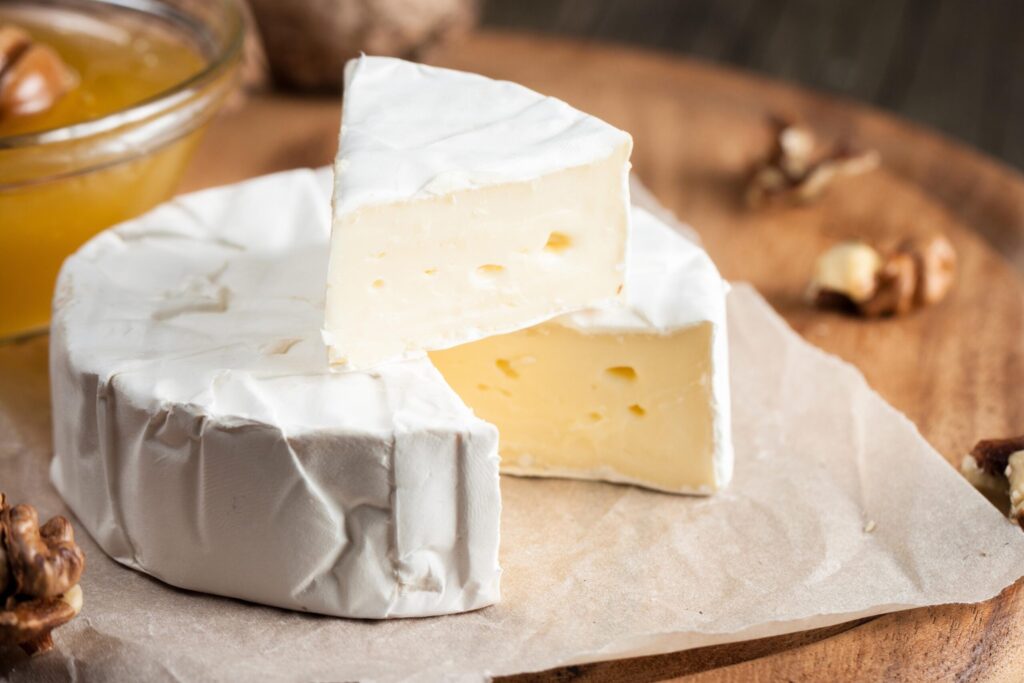
For the Glenfiddich 14, its deeper, richer flavours and spicy undertones make it a perfect partner for heavier, more robust dishes. Consider pairing it with a medium-rare steak or a dish with a good amount of caramelization or roasting, like barbecued ribs.
The charred flavours and the meat’s savouriness will harmonize with the whisky’s vanilla, caramel, and toasted oak notes. Alternatively, for a sweeter pairing, consider a rich, creamy dessert-like crème brûlée or a caramel-based dessert. The creaminess of these dishes will nicely complement the smooth, sweet, and slightly spicy notes of the whisky.
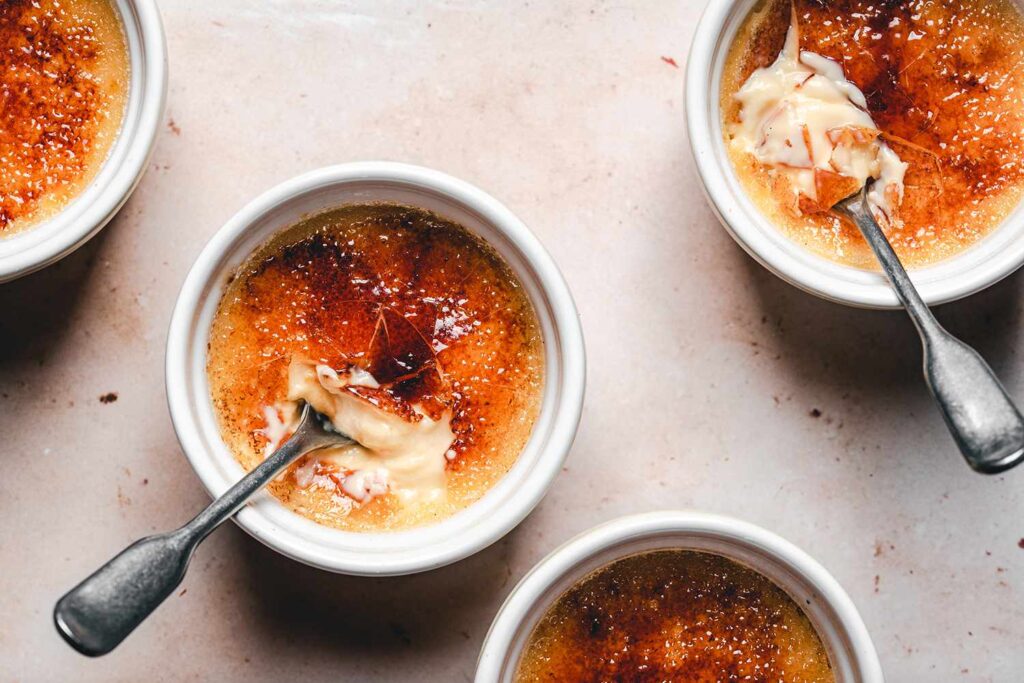
If you’re considering cheese pairings for Glenfiddich 14, consider stronger, mature cheeses. Aged cheddar, Gouda, or even blue cheese can provide a wonderful counterpoint to the whisky’s rich, complex profile.
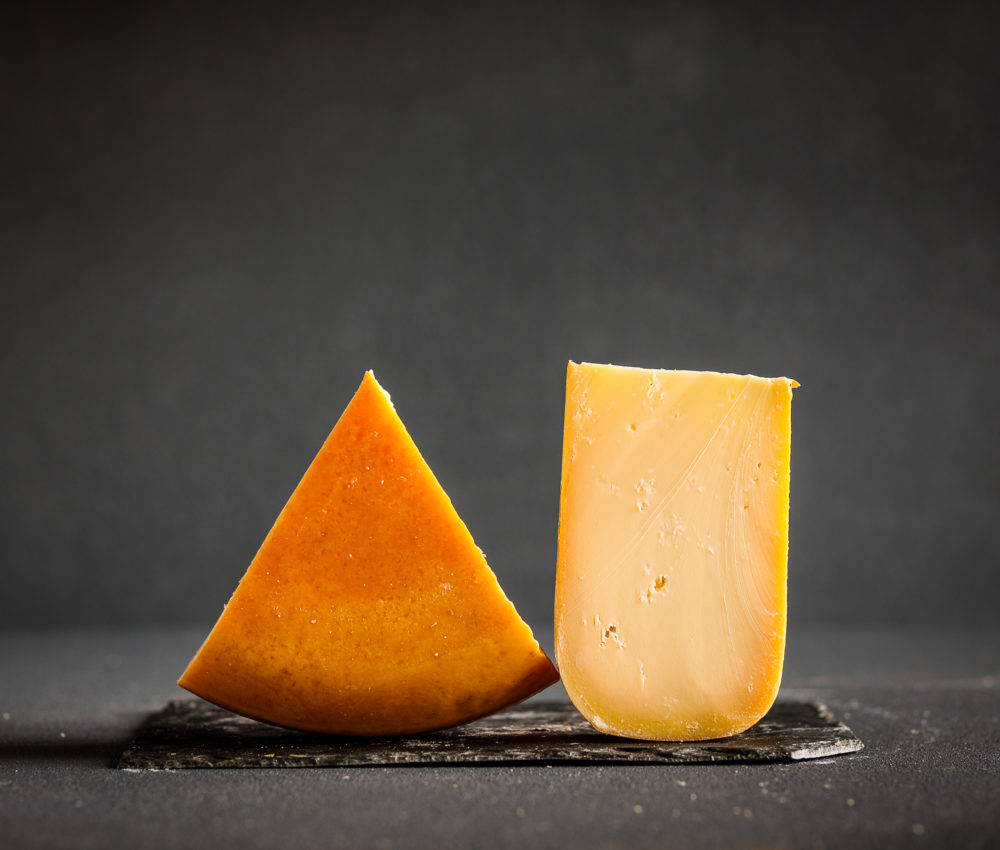
However, what works for one person may not work for another (especially if you are lactose intolerant). It’s a highly personal experience and the best pairings are often those that you personally enjoy the most.
Glenfiddich 12 vs 14: Final Thoughts
Each whisky has its unique strengths, appealing to different preferences and occasions.
The choice between them is a testament to the sheer diversity found within the whisky world, where different processes, ageing times, and cask types can result in vastly different end products.
| Best | Glenfiddich 12 | Glenfiddich 14 |
| Colour | 8/10 | 9/10 |
| Nose/Aroma | 7/10 | 8/10 |
| Mouthfeel | 7/10 | 8/10 |
| Taste/Palate | 7/10 | 7/10 |
| Finish | 6/10 | 7/10 |
| Colour | 35/50 | 39/50 |
The older Glenfiddich sibling had a close call with this one.
If you’re looking for an accessible and straightforward single malt, Glenfiddich 12 could be your dram of choice. It showcases the core characteristics of Speyside whiskies with its fresh and fruity profile.
The nose offers inviting aromas of ripe pear and green apple, complemented by subtle oakiness and maltiness. On the palate, these fruity flavours continue to dominate, bolstered by a hint of vanilla sweetness and a gentle layer of spice.
In contrast, if you’re after a whisky that offers a touch more complexity and depth, Glenfiddich 14 may be more your style. It introduces an added layer of richness, primarily through notes of vanilla and toffee, courtesy of its finishing stage in new American oak barrels. The balance of sweet and spicy flavors is skilfully managed, and the finish is both warm and enduring, adding an extra level of satisfaction to the tasting experience.
Despite the identical alcohol content, each whisky presents a different level of perceived warmth and potency due to its unique flavour profiles.
Again, when it comes to food pairing, both whiskies offer versatile options. The Glenfiddich 12, with its lighter profile, pairs beautifully with creamy cheeses and seafood dishes.
On the other hand, the Glenfiddich 14, with its deeper, richer flavours, stands up well against heavier, savoury dishes like steak or barbecued ribs, and even pairs nicely with strong, mature cheeses and creamy desserts.
Author’s Pick
Choosing should be a personal endeavour. However, as the author, it’s my job to keep you guided in your malt journey.
My pick between Glenfiddich 12 vs 14 goes to the latter. There are several reasons why I lean towards Glenfiddich 14, each related to my personal whisky journey and my appreciation for the subtleties of Scotch.
Firstly, the Glenfiddich 14 offers a heightened level of complexity and depth. Its additional maturation time in new American oak barrels introduces layers of vanilla, caramel, and toasted oak, adding a unique dimension to its character. While the Glenfiddich 12 is undoubtedly charming in its light, fruity freshness, I appreciate how the 14-year-old expression elevates the tasting experience with its more robust profile. The interplay of sweet and spicy elements on the palate is engaging and keeps the tasting experience exciting from the first sip to the last.
Furthermore, the finish of the Glenfiddich 14 is another factor that tips the scales in its favour. A whisky’s finish – the flavours that linger after swallowing – plays a significant role in the overall tasting experience. The 14-year-old boasts a warm, long-lasting finish that nicely balances sweetness with a pleasant oakiness.
The lingering taste is reminiscent of a classic bourbon, thanks to its final maturation stage in new American oak barrels. This extended finish provides a more profound sense of satisfaction and a heightened sense of closure to each sip.
Then, there’s the factor of food pairing. As someone who loves to explore the interaction between whisky and food, I find the Glenfiddich 14 to offer more versatile pairing options. Its richer, deeper flavours stand up well against heavier dishes (unless you’re a vegan, of course), from medium rare steak to caramel-based desserts. This capacity to complement and contrast a broader range of foods enhances the enjoyment of both the whisky and the meal.
Finally, there’s something to be said about the sheer sense of occasion that the Glenfiddich 14 presents. Its increased complexity and depth make it feel a bit more special, a bit more celebratory. It’s the kind of whisky I would pull out to commemorate a significant moment or when I want to treat myself to something extraordinary.
Let’s be real—Glenfiddich 12 is reliable, easy-drinking, and brings that delightful fruity kick we all love. But the Glenfiddich 14 is where it’s at, offering that extra oomph and a finish that’ll leave you wanting more.
Case is closed. But somehow, I’m still bothered as to what my take will be when I stack this 14-year-old against its other sibling, the Glenfiddich 15. Would I choose the older one? How will they fare against each other? Let’s find out!





